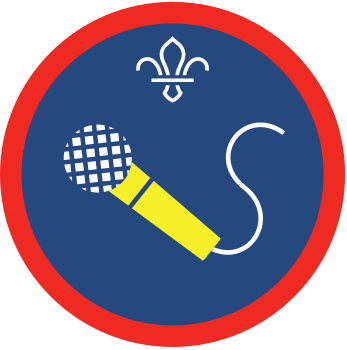Shout out, show off, Scout on
You’ll need
- Scrap paper
- Scrap card
- Coloured pens or pencils
- Bowls
- PVA glue
- Craft materials (for example, tissue paper, pipe cleaners, stickers)
Before you begin
- Write the names of different social media platforms on pieces of paper (for example, Instagram, Twitter, Facebook, and so on). Each piece should have one platform on.
- Write the names of different audiences on pieces of paper (for example, parents and carers who don’t know about Scouts, 10 to 14 year olds who don’t know about Scouts, and teachers who don’t know about Scouts).
- Fold up the pieces of paper. Put all of the platforms in one bowl (or tub) and all of the audiences in the other.
Get stuck in
- Everyone should split into groups of four or five people.
- Each group should choose one piece of paper from each container so they have a platform and an audience.
- Everyone should create a post that promotes Scouts. They should design the post specifically for the platform and audience they chose.
You may want to have a quick discussion to make sure everyone knows the key aspects of each platform. Instagram is image focused, for example, whereas Twitter has a 280-character limit.
- Each group should work together to craft their post. They should use craft materials to illustrate what it’ll look like and get ready to present it to everyone else.
- Each group should take it in turns to present their post, explaining why they made the decisions they did. Everyone should feel free to offer (helpful) feedback and comments.
- The person leading the activity should ask the person in charge of the group’s social media to consider putting the posts on the relevant social media account. The person in charge of the group’s social media could also offer some feedback about each post.
Reflection
This activity was all about communicating about Scouts. Did people have to adapt their ideas and language depending on their target audience? What changes did people make? Lots of communication works best when it tells a story. Can anyone think of a story related to Scouts? People could think about their favourite thing about Scouts, and pick out characters, surprises, and challenges. How could they use this story to tell people about Scouts? Ideally, it should be something that people can relate to that also makes them want to know more.
Safety
All activities must be safely managed. You must complete a thorough risk assessment and take appropriate steps to reduce risk. Use the safety checklist to help you plan and risk assess your activity. Always get approval for the activity, and have suitable supervision and an InTouch process.
- Scissors
Supervise young people appropriately when they’re using scissors. Store all sharp objects securely, out of the reach of young people.
- Glue and solvents
Always supervise young people appropriately when they’re using glue and solvent products. Make sure there’s plenty of ventilation. Be aware of any medical conditions that could be affected by glue or solvent use and make adjustments as needed.
- Online safety
Supervise young people when they’re online and give them advice about staying safe. Take a look at our online safety or bullying guidance. The NSPCC offers more advice and guidance, too. If you want to know more about specific social networks and games, Childnet has information and safety tips for apps. You can also report anything that’s worried you online to the Child Exploitation and Online Protection Command. As always, if you’ve got concerns about a young person’s welfare, including their online experiences, follow the Yellow Card to make a report.
- Phones and cameras
Make sure parents and carers are aware and have given consent for photography.
‘Clickbait’ is content where the main purpose is to attract attention and encourage visitors to click on a link to a particular web page. It could be an eye-catching thumbnail or intriguing headline. Clickbait is often associated with false advertising or poor quality content, but there’s nothing wrong with creating honest content that’s catchy or compelling. Can people think of any images, titles, or captions that would encourage people to explore Scouts’ social media (or website)?
No one has to write anything – they could focus on the craft or the content of the presentation. No one has to present, either. They could help their group prepare and then take a background role, or they could present to a smaller group if that works better for them.
Chat about access features on social media, for example, image descriptions and capitalising each word in a hashtag for screen readers. Encourage people to incorporate accessibility into their designs and presentations.
Not everyone will use social media – don’t single them out, but make sure they’re still included and that everyone has the knowledge they need to join in.
All Scout activities should be inclusive and accessible.
Why not get the most out of social media by making a video? You could use short recordings from different sessions (or trips and camps) and put them to music. Free video editing apps are available for most phones.

